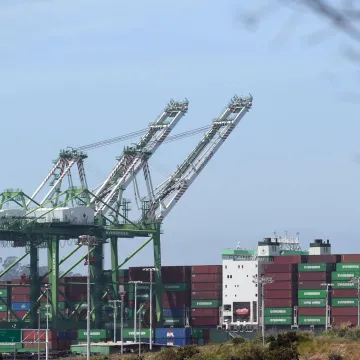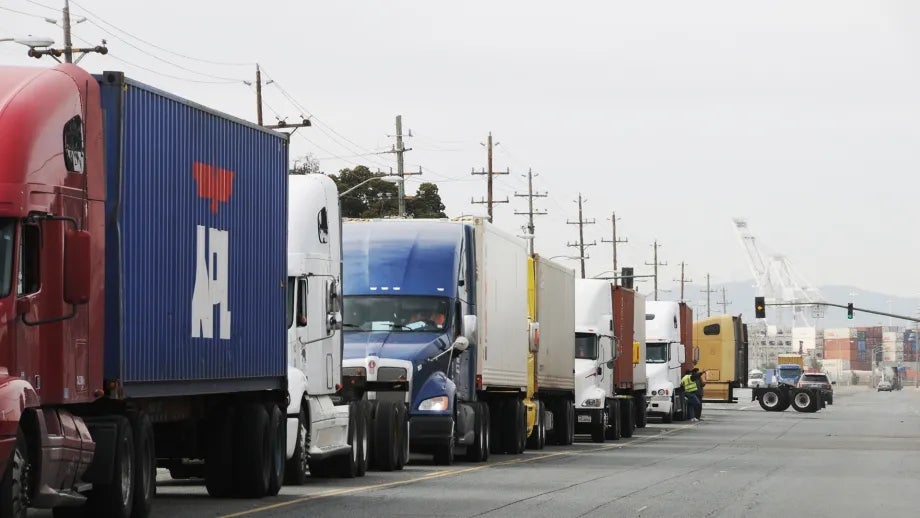San Francisco Bay Area Goods Movement Plan
The movement of freight is a crucial piece of the Bay Area’s regional transportation puzzle. MTC collaborates with numerous partners to facilitate the movement of goods — while reducing negative impacts on local communities.
Freight movement supports a strong economy and delivers the products needed by residents and businesses. It also has a significant environmental and public health impact on nearby communities.
In 2016, MTC produced a new San Francisco Bay Area Goods Movement Plan to help move goods around the Bay as part of the development of Plan Bay Area 2040.
Key Goals
MTC identified 5 key goals for the San Francisco Bay Area Goods Movement Plan:
- Increase economic growth and prosperity
- Reduce environmental and community impacts, and improve the quality of life in communities most affected by goods movement
- Provide safe, reliable, efficient and well-maintained freight movement facilities
- Promote innovative technology strategies to improve efficiency
- Preserve and strengthen a multi-modal system that supports freight movement and is coordinated with passenger transportation systems and local land-use decisions
The Big Picture
The Goods Movement Plan:
- Evaluates existing conditions and key trends, issues and opportunities
- Recommends projects, programs and policies to improve the efficiency of goods movement while reducing impacts on communities
- Includes both detailed descriptions of the Bay Area’s main freight corridors and discussion of local goods movement needs
- Assesses the importance of goods movement to Bay Area employment and the regional economy
MTC led the first study of the Northern California mega-region goods movement system to improve delivery of consumer products, food and parcels across the mega-region.

MTC’s goods movement research is closely integrated with the Alameda County Transportation Commission’s countywide planning effort.
MTC also coordinates with state and federal freight planning and policy initiatives. Ensuring consistency among all plans is a critical part of MTC’s work.
The Bay Area goods movement infrastructure includes the nation’s 5th largest container port — the Port of Oakland — and several specialized seaports.
It also includes the SF International Airport and Oakland International Airport — plus major rail lines and rail terminals and highways that carry some of the highest volumes of trucks in California.

